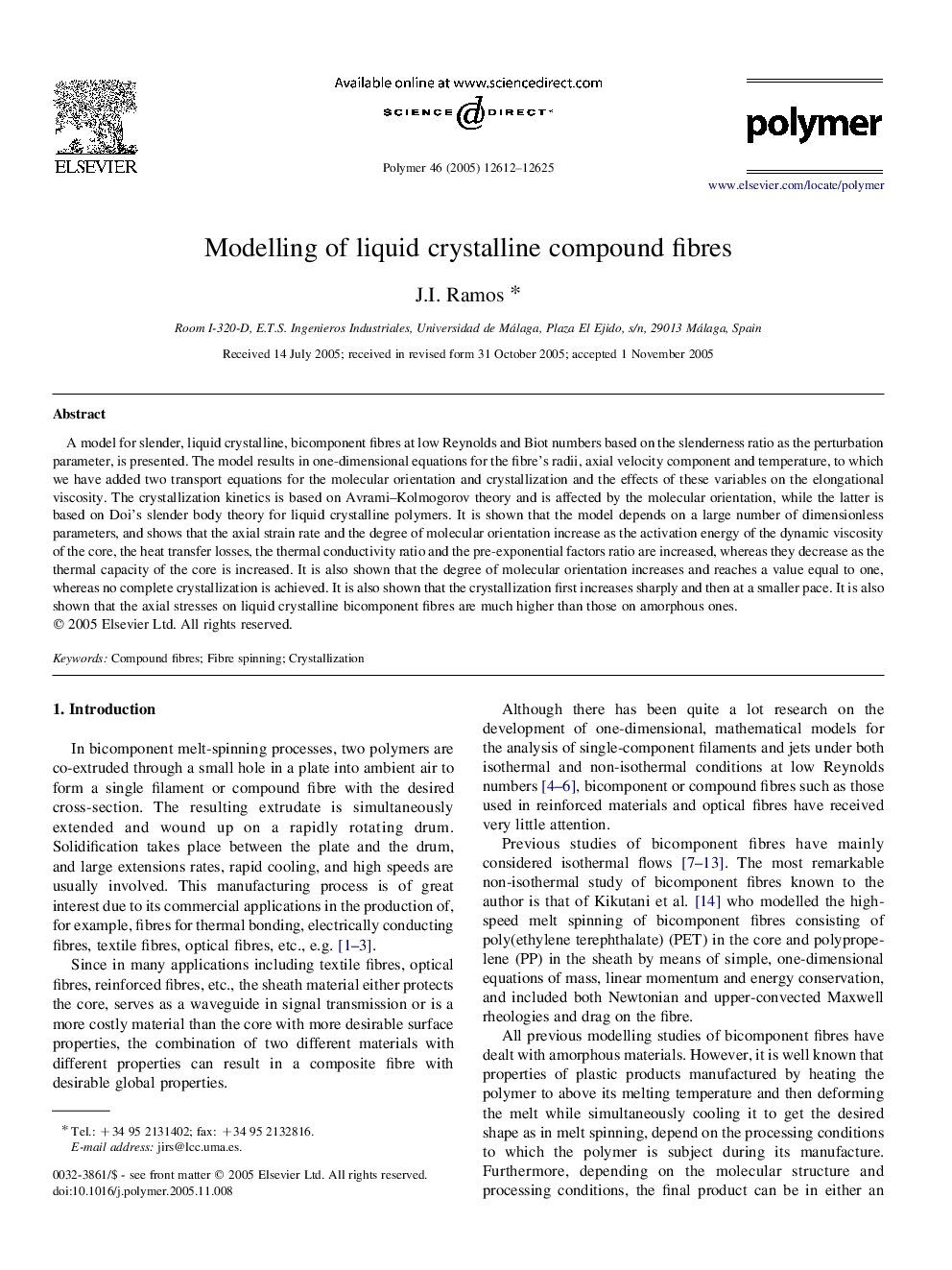| Article ID | Journal | Published Year | Pages | File Type |
|---|---|---|---|---|
| 5189663 | Polymer | 2005 | 14 Pages |
Abstract
A model for slender, liquid crystalline, bicomponent fibres at low Reynolds and Biot numbers based on the slenderness ratio as the perturbation parameter, is presented. The model results in one-dimensional equations for the fibre's radii, axial velocity component and temperature, to which we have added two transport equations for the molecular orientation and crystallization and the effects of these variables on the elongational viscosity. The crystallization kinetics is based on Avrami-Kolmogorov theory and is affected by the molecular orientation, while the latter is based on Doi's slender body theory for liquid crystalline polymers. It is shown that the model depends on a large number of dimensionless parameters, and shows that the axial strain rate and the degree of molecular orientation increase as the activation energy of the dynamic viscosity of the core, the heat transfer losses, the thermal conductivity ratio and the pre-exponential factors ratio are increased, whereas they decrease as the thermal capacity of the core is increased. It is also shown that the degree of molecular orientation increases and reaches a value equal to one, whereas no complete crystallization is achieved. It is also shown that the crystallization first increases sharply and then at a smaller pace. It is also shown that the axial stresses on liquid crystalline bicomponent fibres are much higher than those on amorphous ones.
Keywords
Related Topics
Physical Sciences and Engineering
Chemistry
Organic Chemistry
Authors
J.I. Ramos,
